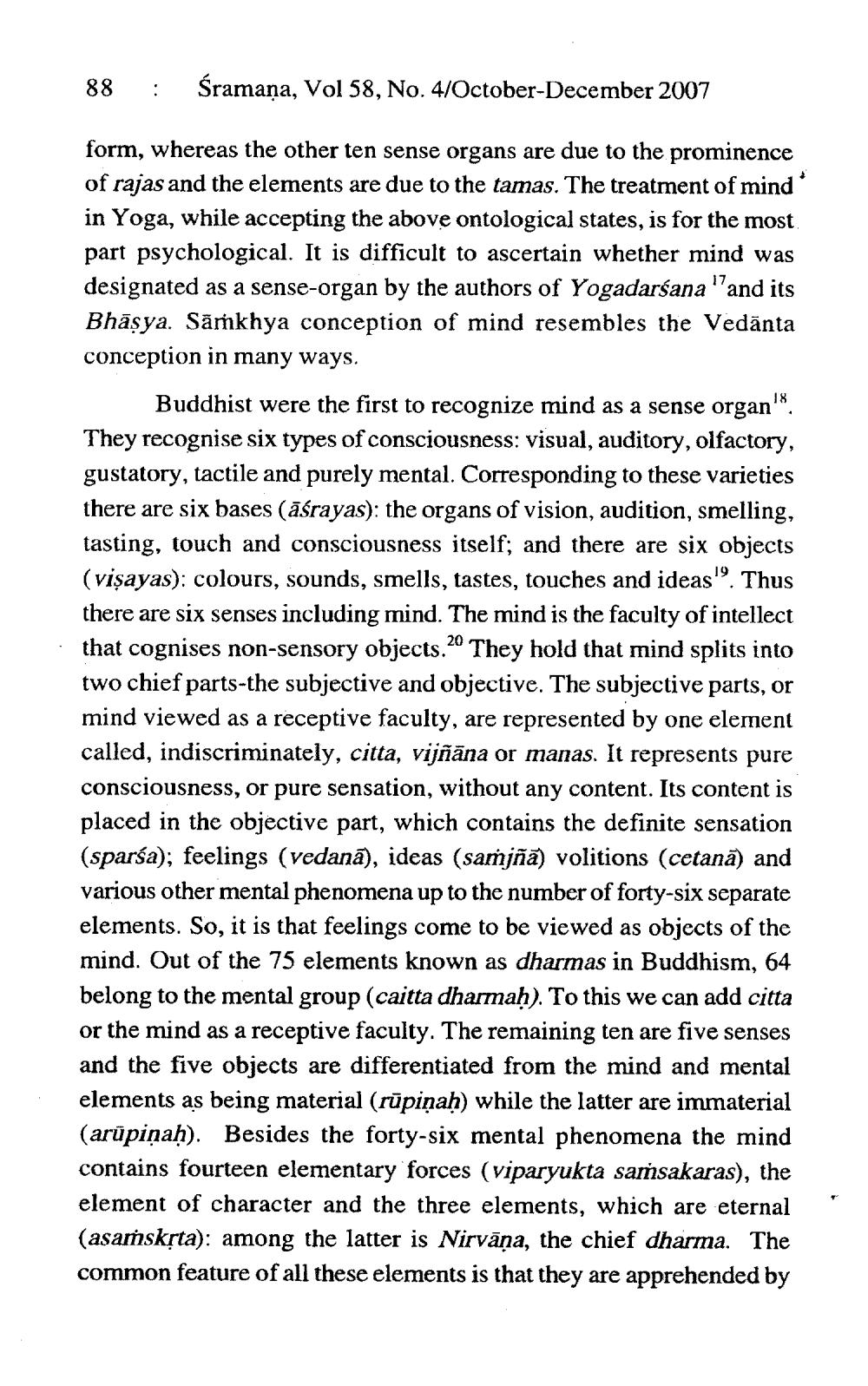________________
88
:
śramaņa, Vol 58, No. 4/October-December 2007
form, whereas the other ten sense organs are due to the prominence of rajas and the elements are due to the tamas. The treatment of mind in Yoga, while accepting the above ontological states, is for the most part psychological. It is difficult to ascertain whether mind was designated as a sense-organ by the authors of Yogadarśana "and its Bhāsya. Samkhya conception of mind resembles the Vedānta conception in many ways.
Buddhist were the first to recognize mind as a sense organ'. They recognise six types of consciousness: visual, auditory, olfactory, gustatory, tactile and purely mental. Corresponding to these varieties there are six bases (āśrayas): the organs of vision, audition, smelling, tasting, touch and consciousness itself; and there are six objects (visayas): colours, sounds, smells, tastes, touches and ideas''. Thus there are six senses including mind. The mind is the faculty of intellect that cognises non-sensory objects.20 They hold that mind splits into two chief parts-the subjective and objective. The subjective parts, or mind viewed as a receptive faculty, are represented by one element called, indiscriminately, citta, vijñāna or manas. It represents pure consciousness, or pure sensation, without any content. Its content is placed in the objective part, which contains the definite sensation (sparsa); feelings (vedanā), ideas (sarjñā) volitions (cetană) and various other mental phenomena up to the number of forty-six separate elements. So, it is that feelings come to be viewed as objects of the mind. Out of the 75 elements known as dharmas in Buddhism, 64 belong to the mental group (caitta dharmah). To this we can add citta or the mind as a receptive faculty. The remaining ten are five senses and the five objects are differentiated from the mind and mental elements as being material (rūpiņah) while the latter are immaterial (arūpiņaḥ). Besides the forty-six mental phenomena the mind contains fourteen elementary forces (viparyukta saṁsakaras), the element of character and the three elements, which are eternal (asaṁskṛta): among the latter is Nirvāņa, the chief dharma. The common feature of all these elements is that they are apprehended by




